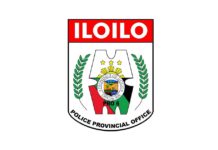ILOILO – Residents and officials of a village in Lambunao town support the ongoing preregistration for the Philippine Identification System (PhilSys).
On Monday, PhilSys enumerators visited Barangay Walang, one of the three villages in Lambunao with the biggest number of households targeted for the preregistration based on the Listahanan of the Department of Social Welfare and Development (DSWD). The other two barangays are Jayobo and Maribong.
Village head Gemma Legarda said not all of her constituents have identification (ID) cards that can be used for transactions.
In fact, she said that during the distribution of assistance under the social amelioration program (SAP), she had to issue a barangay ID that the villagers could use to claim their benefits.
“I am thankful to the government for the national ID. I wanted all of them to have their own ID,” she said in the dialect.
Barangay Walang is one of the seven villages of Lambunao where population is 100 percent Indigenous People (IP).
As of the end of 2019, it had a population of 2,664 and over 600 households, out of which 515 have been identified for the PhilSys preregistration.
Walang barangay councilor Ma. Ailene Rose Latoza said residents could use their national ID whenever and wherever they needed to show proof of identity.
One of the registrants, 47-year-old Alexes Subebe, said while he has other government-issued IDs, the national ID would be very helpful.
“This is also for our own good, when we do future transactions with government,” he said.
Astrid Arboleda said she has been waiting for the national ID since it was announced by President Rodrigo Duterte.
She urged other Ilonggos not to have second thoughts about securing one because “whenever you go, you need a valid ID.”
Lambunao has 73 barangays and 14,074 household heads have been identified for the preregistration.
As of Monday, over 6,000 households have been covered by the preregistration that is being handled by 11 enumerators and two supervisors.
During the preregistration, registrants are asked about their demographic details which are directly uploaded by the enumerators using a tablet directly to their central office.
After the interview, registrants are given their schedule for the Step 2 of the registration process where their biometrics, fingerprints and photos will be captured in a registration center to be designated by the local government unit and the Philippine Statistics Authority. (With a report from PNA/PN)





